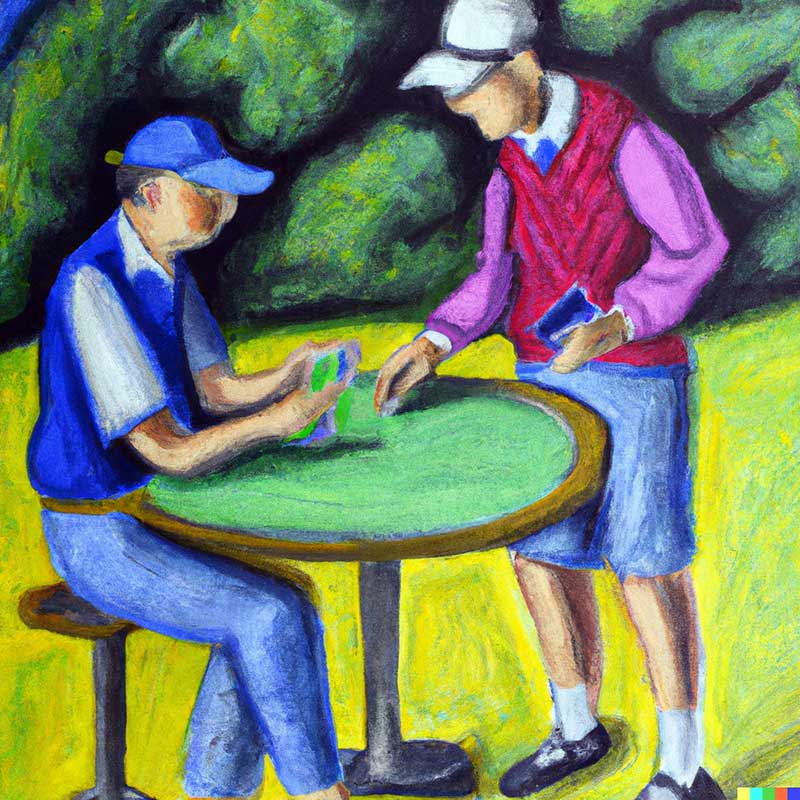Is golf addictive? A golf-loving psychiatrist’s opinion
You are a golf addict, and why that’s not necessarily bad.
 The Shenandoah Valley has plenty of “golf widows” — wives who’d claim golf has stolen their husbands from them, both in time and affection.
The Shenandoah Valley has plenty of “golf widows” — wives who’d claim golf has stolen their husbands from them, both in time and affection.
Along with their wives, I’m sure there’s a number of golfers who’d openly claim they’re “addicted to golf.” Some claim it jokingly, but behind the humor, is there a cankering addiction, one that can be classified side-by-side with addictions like gambling and alcoholism?
As a psychiatrist, addictionologist and avid golfer myself, I think we should look at this a little closer. It’s my opinion that many of us are physiologically and psychologically addicted to this beautiful, aggravating, consuming game we call golf.
Before jumping to conclusions, let’s quickly go through the typical criteria for something to be classified as an addiction:
— The behavior is repetitive.
— The subject will persistently pursue the behavior, even in the face of adverse consequences.
— The subject feels compulsion to satisfy the need to do the behavior.
— The behavior grants the subject an initial sense of well-being.
— A subject feels a craving for the behavior.
— The subject creates a tolerance to the behavior over time.
— Ending the behavior yields a form of emotional/physical withdrawal.
— Continuing the behavior can upset the subject’s relationships and life responsibilities.
Can excessive golfing meet these criteria? I think it’s unlikely that golf elicits a physically addictive dependence, but it definitely can create psychological and physiological effects that reinforce and perpetuate the behavior according to these criteria.

In other words, golf, taken to an extreme, can definitely be classified as an addiction.
To make things worse, excessive golfing can be paired with gambling and alcohol consumption on the green, effectively combining addictive behaviors. Yikes.


So what creates this additive response to golf? As in gambling and video games, there is a burst of dopamine with each good move, stroke, hit — that “Ahhh” feeling on that one pure shot. There’s just nothing like it.
Sounds like drugs, huh?
However, if you were to get a positive response/reward in every swing, the degree of pleasure would wane over time, as you’d simply come to expect it. Think of having your favorite food for every meal … boredom would soon ensue. This development of “tolerance” is the result of either a decrease in the amount of dopamine released with continued behavior or a decreased response to the same amount of dopamine over and over again.
Something called “intermittent reinforcement” is the most powerful force to compel certain behaviors, making the most addictive things … well, addicting. This kind of psychological reinforcement is when a good reward isn’t obtained every time the behavior occurs. Rather, the reward comes every now and then, sometimes extremely rarely, like in slot machines. In golf, even though you teed off 17 terrible balls, the 18th was smooth as butter, and that’ll keep you coming back for another expensive and sweltering 18 holes of anxiety.

Despite this game being infuriatingly frustrating, golf is so addictive because it is frustrating, making the scattered successes feel like ecstasy.
Of course, there are positive aspects of the game that reinforce the behavior, like being immersed in nature, exercise and being with friends. And compared to other common addictions — alcohol, gambling, infidelity — golf can be a fulfilling experience with lasting positive effects, too.
Remember, though, as with anything pleasurable, the risk of excess is always present, leading to an actual addiction. I think we as a golf community could benefit from taking a step back, looking at our behavior on the green, and pondering on how our golfing may be affecting the truly important people in our lives.
We golf addicts also have a unique possibility of turning this obsession into a medium for positivity and human connection. If we can funnel our love for this game to work for us instead of against us, we can lift friends and family close to us instead of weighing them down. The Shenandoah Valley is one of the most beautiful places in the United States, and its golf courses are no exception, making it ideal for human bonding.
Think about it — we spend hours immersed among the trees in the shifting seasons, deer plodding along in the woodline as we putt in silence on the 14th hole. This is the perfect environment for family bonding disconnected from the television. This game can teach a myriad of life lessons, every stroke a metaphor for success or failure. Rather than letting golf rule our lives, let’s make sure we guide golf to take us to greener pastures of mental health.
Lawrence Conell
Dr. Lawrence Conell, MD is a Psychiatry Specialist in Harrisonburg, VA and has over 46 years of experience in the medical field. He graduated from EASTERN VIRGINIA MEDICAL SCHOOL / MEDICAL COLLEGE OF HAMPTON ROADS in 1977.






